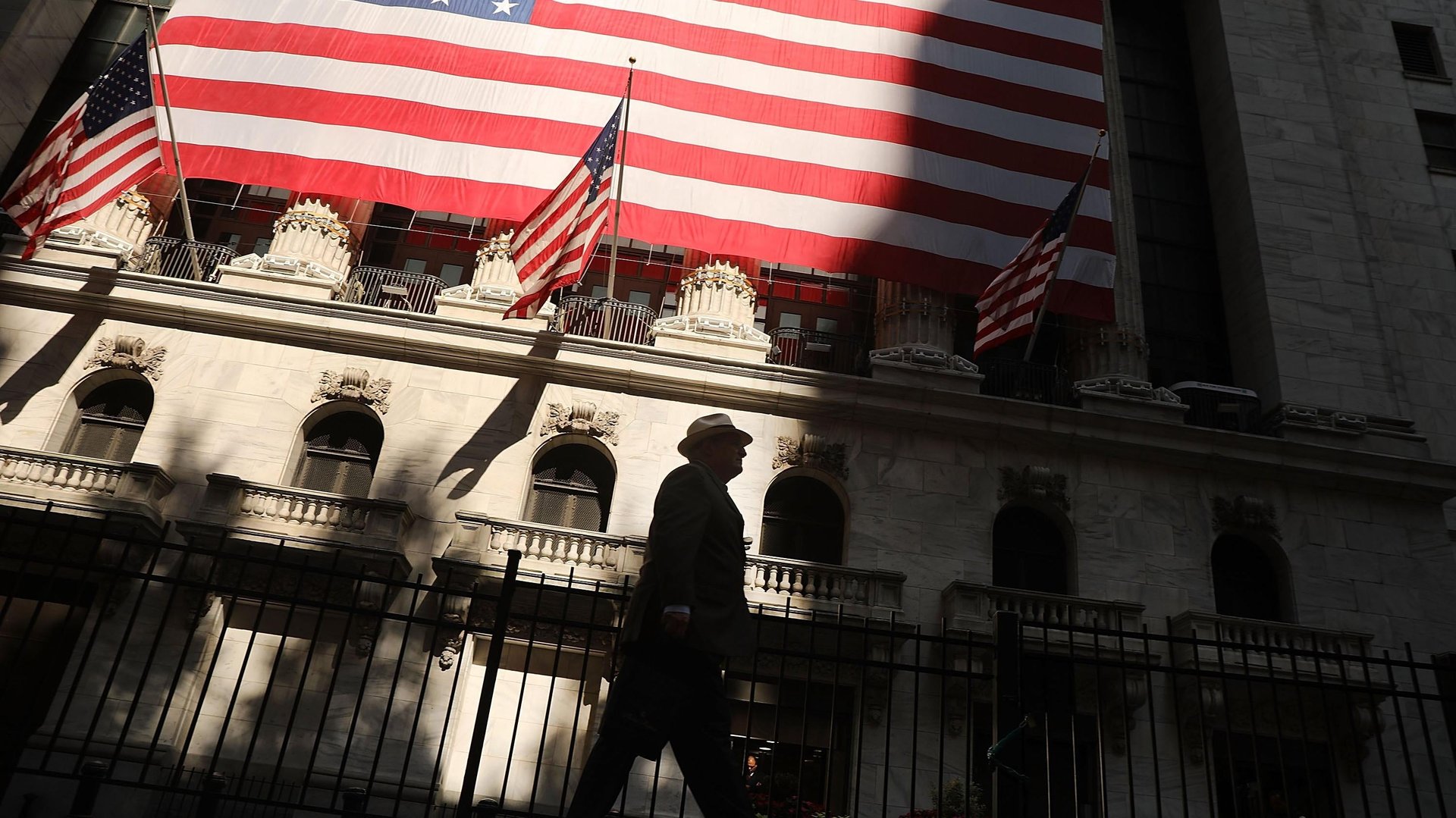America’s GDP growth numbers will tell a tale of two economies
Democrats could use a strong GDP reading ahead of the midterms, even if concerns about the economy remain

After recording two consecutive quarters of negative growth, the Bureau of Economic Analysis (BEA) is expected to announce tomorrow (Oct. 27) the US economy expanded during the third quarter.
Various analysts have been revising their GDP growth estimates, pointing towards a healthy rebound. Consumer spending has not dropped yet and employment numbers remain robust. Amid persistent inflation and increasing interest rates, a strong GDP reading might help Democrats convince voters that they can curb economic turmoil ahead of the midterm elections on Nov. 8.
As quoted in Reuters, Goldman Sachs attributed the positive result to strong employment figures in the private sector and a decrease in the trade deficit, largely due to a fall in imports. But in the long run, the rising cost of living and the Federal Reserve’s continuous attempts to tackle it by hiking interest rates are still forecast to cause a recession.
Goldman predicts there’s a 35% chance the US economy will enter a recession in the next 12 months. Wells Fargo pushed the timeline for a mild recession to hit from the start of 2023 to the second quarter of next year.
US third quarter GDP estimates
GDP Now, Federal Reserve Bank of Atlanta: 2.9%
Wells Fargo: 2.8%
Goldman Sachs: 1.9%.
Charted: US GDP Growth
So what about a recession?
The National Bureau of Economic Research avoided to proclaim a recession after the second quarter GDP figures were released in July due to other economic indicators, such as a tight job market, that countered the perception of a significant economic decline. Similarly, a growth in GDP in the third quarter alone shouldn’t indicate a burgeoning economic situation.
While the economy grew overall, a closer look at industry-specific performances reveals a mixed bag. Several big-ticket firms like automaker General Motors and beverages giant Coca-Cola beat earnings expectations, but the third quarter was also full of misses like in the case of aluminum bellwether Alcoa as well as Big Tech.
Some industries are showing resilience while others show weakness:
Industries that are looking up ☝️
The travel and tourism industry is booming, especially as tourists satiate their thirst for travel after the pandemic.
Manufacturing has been rising more than expected. Key metrics like output, hours worked, and productivity are all improving.
Industries on the downslide👇
Retail is still showing resilience, but is expected to decline as Americans tighten their purse strings in coming months.
While GM seems to have bucked the trend, auto sales have overall been lackluster. The likes of Japanese carmakers like Toyota, Honda, and Nissan reported large declines. FCA—part of the Stellantis group which includes the Fiat and Chrysler brands—saw sales slump, too.
The housing market is deep in the doldrums. With rising mortgage rates due to high interest rates, housing prices are on track for a long descent. Existing home sales slid for eight months straight, and will continue falling.
Make-or-break trade deficit:
The US trade deficit hit a record $106.9 billion in March. This reflected poorly in the economy’s scorecard—the GDP growth rate turned negative in the first quarter. In August, the country’s trade deficit shrank to $67.4 billion—a 15-month low thanks to a fall in imports due to consumers spending more on services and retailers trying to manage existing stock. This will likely help put GDP growth back in the green.
But this boost to GDP is going to be short lived. In coming months, a strong dollar could hurt exports and a rebound in imports could widen the gap once again, as recent data already shows.
Calendar: A week of temperature checks for the US economy
Oct. 25: Housing prices data.
Oct. 26: Home sales data.
Oct. 27: Q3 GDP data
Oct. 27: US durable goods orders
Oct. 28: US University of Michigan Consumer Sentiment
Oct. 28: Personal Consumption Expenditure Price Index, which reports on the changes in the price of goods and services purchased by consumers for the purpose of consumption, excluding food and energy
Oct. 28: Employment Cost Index, which measures the change in total employee compensation each quarter
Forget recession, worry about geopolitics
When looking at risk to the world economy, JPMorgan Chase CEO Jamie Dimon is not worried much about a recession. His focus is instead on the fractured geopolitical situation resulting from the conflict in Europe and tensions in the Pacific.
“There’s a lot of stuff on the horizon which is bad and could—doesn’t necessarily—but could put the US in recession. That’s not the most important thing we think about. We’ll manage through that. I’d worry much more about the geopolitics of the world today…The relationships of the Western world would have me far more concerned than whether there’s a mild or slightly severe recession [in the United States].” -JPMorgan Chase CEO Jamie Dimon at the Future Investment Initiative conference in Riyadh, Saudi Arabia.
Because of Russia’s war in Ukraine and diplomatic strain in the US-China relationship, America’s tilt towards deglobalization keeps increasing. The decoupling—deliberate or otherwise—is exacerbating the cracks in the supply chain as well as the burgeoning energy crisis. Locking heads with OPEC might only make things worse, but for Dimon that’s also a passing storm.
